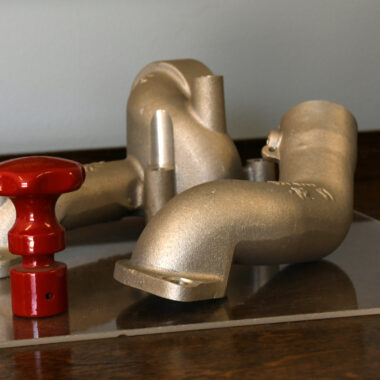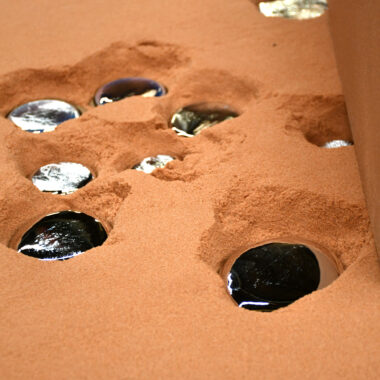Unraveling About Aluminum Casting: From Essentials to Experience
Wiki Article
Crafting Perfection: Just How to Achieve High-Quality Light Weight Aluminum Castings Each Time
In the world of aluminum spreading, the quest of excellence is a continual journey that requires a careful strategy and an eager understanding of the ins and outs included. Achieving constant high-quality light weight aluminum spreadings demands a detailed understanding of the processes, from choosing the proper alloy to carrying out accurate mold layouts and carefully controlling spreading parameters. Nonetheless, real mastery hinges on the capacity to execute these components effortlessly to create remarkable castings every single time. As we explore the details of crafting perfection in light weight aluminum spreadings, discovering the vital techniques and methods that bring about flawless outcomes becomes vital for those striving for excellence in this customized field.Recognizing Aluminum Spreading Processes
Light weight aluminum casting procedures, necessary in the production industry, entail the intricate transformation of molten aluminum into solid types with a series of very carefully regulated actions. Recognizing these procedures is vital to attaining high-quality aluminum spreadings continually - about aluminum casting. The key methods used in light weight aluminum spreading are pass away spreading, sand casting, and investment casting
Each of these procedures has its benefits and is picked based upon aspects like intricacy, quantity, and wanted coating of the light weight aluminum spreading. about aluminum casting. Recognizing the details of these approaches is crucial for manufacturers aiming to produce top quality aluminum castings consistently
Selecting the Right Aluminum Alloy
Selecting the ideal aluminum alloy is an essential decision in the manufacturing of top quality light weight aluminum castings. When choosing a light weight aluminum alloy for casting, it is crucial to think about the details requirements of the application to make sure optimal performance.Among the most typically made use of aluminum alloys for casting is A356. This alloy uses outstanding castability, high toughness, and great rust resistance, making it ideal for a large range of applications. 6061 light weight aluminum alloy is preferred for its superior weldability and great mechanical residential properties. For applications calling for high strength, 7075 aluminum alloy is a popular option because of its exceptional strength-to-weight ratio.
In enhancement to mechanical properties, considerations such as company website price, schedule, and post-casting procedures need to additionally affect the option of the ideal light weight aluminum alloy. By meticulously reviewing these aspects, producers can make certain the production of top notch aluminum castings that satisfy the wanted requirements.
Carrying Out Appropriate Mold Design
Developing a reliable mold and mildew style is important for making sure the successful manufacturing of high-grade light weight aluminum castings. Proper mold and mildew style plays a considerable role in attaining the preferred qualities of the end product. To carry out a successful mold and mildew style, factors such as product flow, cooling prices, and part geometry have to be very carefully considered.One trick facet of mold layout is guaranteeing proper dental filling and solidification of the aluminum within the mold and mildew cavity. This entails developing jogger and gating systems that help with smooth steel flow and protect against problems such additional hints as air entrapment or insufficient filling. In addition, integrating air conditioning channels right into the mold style helps manage solidification prices and decrease the try this website threat of porosity or shrinkage flaws.

Controlling Casting Parameters

Guaranteeing Post-Casting Top Quality Checks
To keep the high quality of aluminum castings, complete post-casting top quality checks are important. After the spreading procedure is finished, it is crucial to make sure that the last items fulfill the desired criteria and requirements.Dimensional precision is an additional crucial element that should be confirmed throughout post-casting high quality checks. Dimensions of crucial measurements and resistances need to be required to verify that the castings adapt the needed specifications. Additionally, mechanical residential properties such as solidity, tensile toughness, and influence resistance might require to be examined through product screening to make certain that the spreadings have the needed stamina and toughness for their designated application.
Final Thought
Finally, accomplishing premium aluminum castings calls for a thorough understanding of the spreading procedures, choosing the appropriate alloy, designing mold and mildews successfully, managing casting criteria diligently, and conducting post-casting quality checks diligently. By following these actions, manufacturers can continually generate light weight aluminum castings that satisfy the greatest standards of top quality and performance.Accomplishing consistent premium aluminum castings requires a detailed understanding of the procedures, from choosing the appropriate alloy to implementing accurate mold designs and diligently regulating casting criteria. The primary approaches used in light weight aluminum casting are pass away casting, sand spreading, and investment casting.
Financial investment casting, likewise known as accuracy spreading, includes developing wax patterns that are coated in ceramic to create molds.Choosing the ideal aluminum alloy is an essential decision in the manufacturing of high-quality aluminum spreadings.Ensuring accurate control over spreading parameters is vital for keeping consistency and high quality in light weight aluminum spreading production.
Report this wiki page